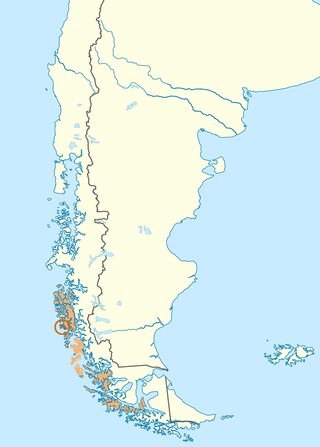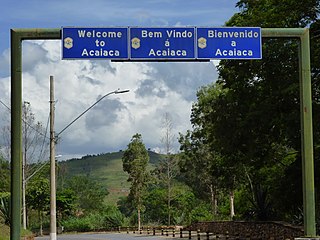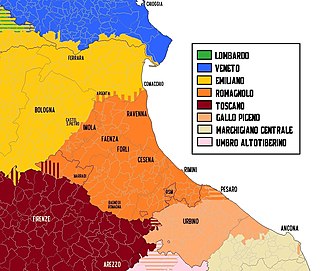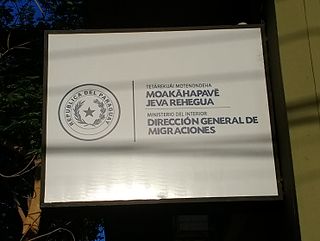Related Research Articles

Portuguese is a Western Romance language of the Indo-European language family originating from the Iberian Peninsula of Europe. It is the official language of Angola, Brazil, Cape Verde, Guinea-Bissau, Mozambique, Portugal and São Tomé and Príncipe, and has co-official language status in East Timor, Equatorial Guinea and Macau. Portuguese-speaking people or nations are known as Lusophone. As the result of expansion during colonial times, a cultural presence of Portuguese speakers is also found around the world. Portuguese is part of the Ibero-Romance group that evolved from several dialects of Vulgar Latin in the medieval Kingdom of Galicia and the County of Portugal, and has kept some Celtic phonology.

Guarani, specifically the primary variety known as Paraguayan Guarani, is a South American language that belongs to the Tupi–Guarani branch of the Tupian language family. It is one of the official languages of Paraguay, where it is spoken by the majority of the population, and where half of the rural population are monolingual speakers of the language.

Kawésqar (Qawasqar), also known as Alacaluf, is a critically endangered Alacalufan language spoken in southern Chile by the Kawésqar people. Originally part of a small family, only the northern language remains. In 2009, only a handful of elderly people spoke the language, most of whom lived on Wellington Island off the southwest coast of Chile.
The Mocoví language is a Guaicuruan language of Argentina spoken by about 3,000 people, mostly in Santa Fe, Chaco, and Formosa provinces.

Portuguese is the official and national language of Brazil, being widely spoken by nearly all of its population. Brazil is the most populous Portuguese-speaking country in the world, with its lands comprising the majority of Portugal's former colonial holdings in the Americas.
Itonama is a moribund language isolate once spoken by the Itonama people in the Amazonian lowlands of north-eastern Bolivia. It was spoken on the Itonomas River and Lake in Beni Department.
Zamucoan is a small language family of Paraguay and Bolivia.
Chácobo-Pakawara is a Panoan language spoken by about 550 of 860 ethnic tribal Chácobo people of the Beni Department northwest of Magdalena, Bolivia, and 17 of 50 Pakawara. Chácobo children are learning the language as a first language, but Pakawara dialect is moribund. Karipuna may have been a variant; alternative names are Jaunavô (Jau-Navo) and Éloe.
Ayoreo is a Zamucoan language spoken in both Paraguay and Bolivia. It is also known as Morotoco, Moro, Ayoweo, Ayoré, and Pyeta Yovai. However, the name "Ayoreo" is more common in Bolivia, and "Morotoco" in Paraguay. It is spoken by the Ayoreo people, an indigenous ethnic group traditionally living on a combined hunter-gatherer and farming lifestyle.

Chamacoco is a Zamucoan language spoken in Paraguay by the Chamacoco people. It is also known as Xamicoco or Xamacoco, although the tribe itself prefers the name Ishír and sometimes Jewyo. When the term Ishiro is used to refer to the language, it is an abbreviation for Ishir(o) ahwoso, literally meaning 'the words, the language of the Chamacoco people'. It is spoken by a traditionally hunter-gatherer society that now practices agriculture. Its speakers are of all ages, and generally speak Spanish or Guarani as second and third languages.
The Mascoian languages, also known as Enlhet–Enenlhet, Lengua–Mascoy, or Chaco languages, are a small, closely related language family of Paraguay.

Romagnol is a Romance language spoken in the historical region of Romagna, consisting mainly of the southeastern part of Emilia-Romagna, Italy. The name is derived from the Lombard name for the region, Romagna. Romagnol is classified as endangered because older generations have "neglected to pass on the dialect as a native tongue to the next generation".
Yaminawa (Yaminahua) is a Panoan language of western Amazonia. It is spoken by the Yaminawá and some related peoples.
The Intercontinental Dictionary Series is a large database of topical vocabulary lists in various world languages. The general editor of the database is Bernard Comrie of the Max Planck Institute for Evolutionary Anthropology, Leipzig. Mary Ritchie Key of the University of California, Irvine is the founding editor. The database has an especially large selection of indigenous South American languages and Northeast Caucasian languages.
Enxet, also known as Enxet Sur or SouthernLengua, is a language spoken by the Indigenous southern Enxet people of Presidente Hayes Department, Paraguay. It is one of twenty languages spoken by the wider Gran Chaco Amerindians of South America. Once considered a dialect of a broader language, known as Vowak or Powok, Enxet and Enlhet diverged as extensive differences between the two were realized.

The Republic of Paraguay is a mostly bilingual country, as the majority of the population uses Spanish and Guaraní. The Constitution of Paraguay of 1992 declares it as a multicultural and bilingual country, establishing Spanish and Guaraní as official languages. Spanish, an Indo-European language of the Romance branch, is understood by about 90% of the population as a first or second language. Guaraní, an indigenous language of the Tupian family, is understood by 77%, and its use is regulated by the Academy of the Guaraní Language.

Indigenous peoples in Paraguay, or Native Paraguayans, include 17 ethnic groups belonging to five language families. While only a 1.7% of Paraguay's population is fully indigenous, 75% of the population identifies as being partially of indigenous descent; however, the majority do not identify as being indigenous but as Mestizos. Most of the native population lives in the northwestern part of the country, the Gran Chaco.
Aché, also known as Guayaki, is a Guarani language of Paraguay with three living dialects: Ache gatu, Ache wa, and Ñacunday River Ache. The Ñacunday River dialect has low mutual intelligibility with the other two dialects.
The Wichí languages are an indigenous language family spoken by the Wichí in northwestern Argentina and far-southeastern Bolivia, part of the Matacoan family. They are also known as Mataco, Wichi, Wichí Lhamtés, Weenhayek, Noctenes, Matahuayo, Matako, Weʃwo. The name Mataco is common but pejorative.
Historical glottometry is a method used in historical linguistics. It is a quantitative, non-cladistic approach to language subgrouping.
References
- 1 2 "ISO change request" (PDF). Retrieved 5 April 2021.
- ↑ "Enlhet-Enenlhet. Una familia lingüística chaqueña" [Only-Only. A Chaqueña linguistic family](PDF) (in Spanish). Archived from the original (PDF) on 2016-03-04.
- ↑ "Lengua Sanapaná". Promotora Española de Lingüística. Retrieved 2024-09-01.
- ↑ "Sanapaná". pueblosoriginarios.com. Retrieved 5 April 2021.
- ↑ van Gysel, Jens (2017). Temporal Predicative Particles in Sanapaná and the Enlhet-Enenlhet Language Family (Paraguay): A Descriptive and Comparative Study. Leiden University. pp. 27–38.